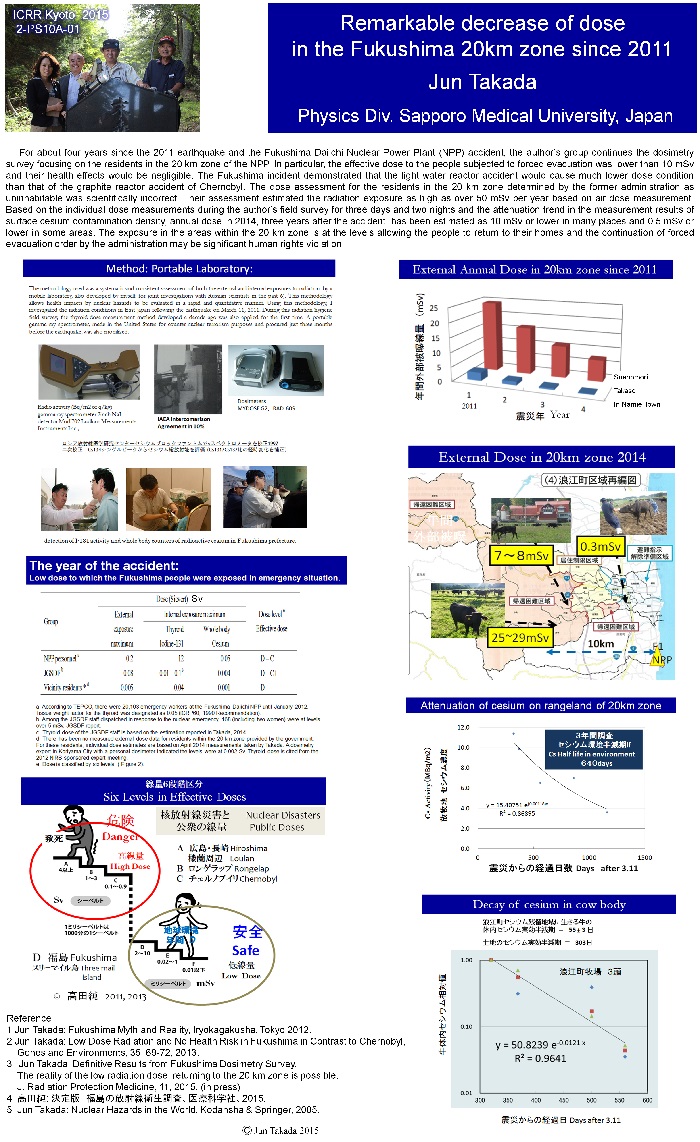
新着情報
ICRR2015 福島20km圏内の線量の2011年以来の顕著な減衰Radiation Protection Information Center
 高田純 報告ポスター
高田純 報告ポスター
Remarkable decrease of dose in the Fukushima 20km zone since 2011
Jun Takada
Physics Div. Sapporo Medical University, Japan
For about four years since the 2011 earthquake and the Fukushima Daiichi Nuclear Power Plant (NPP) accident, the author’s group continues the dosimetry survey focusing on the residents in the 20 km zone of the NPP. In particular, the effective dose to the people subjected to forced evacuation was lower than 10 mSv and their health effects would be negligible. The Fukushima incident demonstrated that the light water reactor accident would cause much lower dose condition than that of the graphite reactor accident of Chernobyl. The dose assessment for the residents in the 20 km zone determined by the former administration as uninhabitable was scientifically incorrect. Their assessment estimated the radiation exposure as high as over 50 mSv per year based on air dose measurement. Based on the individual dose measurements during the author’s field survey for three days and two nights and the attenuation trend in the measurement results of surface cesium contamination density, annual dose in 2014, three years after the accident, has been estimated as 10 mSv or lower in many places and 0.5 mSv or lower in some areas. The exposure in the areas within the 20 km zone is at the levels allowing the people to return to their homes and the continuation of forced evacuation order by the administration may be significant human rights violation.









